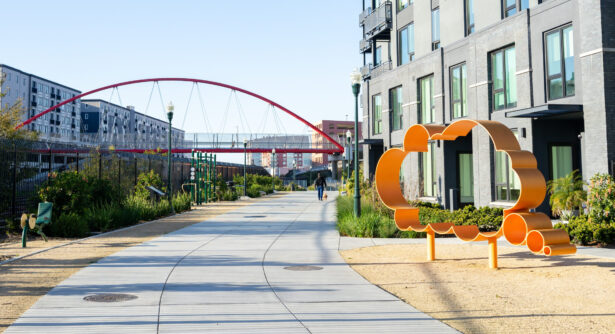
No Empty Meetings: Facilitating Great Community Engagement
We’ve all been in a boring meeting. Awkward pauses, meandering conversations or no room to speak. What a waste! Remedying common meeting pitfalls has real potential to improve Brownfields projects. Connecting with stakeholders makes the process more equitable. And soliciting local feedback can identify liabilities or possibilities that even the most well informed newcomers couldn’t have predicted. Community engagement is also a requirement for most grant funded projects.
This week at the 2023 Business & Environment Conference and Expo in Portland Oregon, CCLR’s Norman Wright will present his top tips for facilitating good (even great) meetings. Here’s a summary of the wisdom he’ll impart:
1) Have a clear purpose
From budgets to schedules to the unknowns of hazardous materials, some of the greatest areas of uncertainty that a project team deals with are also the greatest areas of concern for the community. So when engaging the public, come with all the information you have available and use it to confront the most vulnerable parts of the project.
Make it your goal to engage with the community in a way that helps them, and you, build a shared understanding of how the project can meet everyone’s needs in a useful way. That is the core purpose of community engagement.
Purpose is critical at the smallest of levels, too. Something as simple as creating, and sticking to, a preset agenda is vital for keeping a meeting meaningful. Some participants may dislike a tightly-run meeting but almost everyone appreciates the mindful facilitation.
2) Include more voices
Depending on the needs of the audience, consider ways to increase opportunities to contribute. Within a meeting these might include surveys, “show of hands” polls, dot exercises, calling on people or other creative facilitation methods. It can also include steps to be more inclusive, such as having interpreters or bilingual materials.
Dot exercises, for example, give every participant a chance to offer their views and priorities without having to resort to public speaking or long expositions. These exercises require the facilitator to develop a poster or set of displays that show all the key themes, topics and options related to the meeting’s purpose. These can be developed beforehand or facilitated by the community’s discussion in the meeting itself. Once complete, there will be many competing ideas that will need to be sorted out. The community does this by voting for the things that are most important to them. Their votes are expressed through the “dots” or stickers that they place under each item. More dots = more priority.

Dot exercises are a classic tool used in community planning events. This is an example from Ft. Collins, Colorado.
3) State your intentions
Let your audience know what you want to learn from them and how their feedback will affect the process. The IAP2 Spectrum of Public Participation outlines five levels of participation from ‘inform’ on the low end where the public is provided with information but not given any opportunity to be a part of the decision process to ‘empower’ at the high end where final decisions are in the hands of the community.
As an extension of Item #1, it is vital to recognize the valuable information the community can provide. Whether it is their reactions to your most vulnerable parts of a project or their sense of priorities and needs around other issues, there is always something to be learned from the people who participate. When you make it clear that you wish to learn from them, especially on a series of specific, important topics — environmental hazards, future uses, reactions to potential construction schedules, etc. — you will gain more confidence from the group. People participate in these meetings in order to provide solutions. Even the most staunch opponent to a project will want to provide you helpful information if you clearly value it and let them know.
4) Give and Take
It’s important to treat community meetings as fact finding missions. Every party will probably have to make some concessions, but through compromise they’ll also get some wins! When negotiations are on the table, consider the power of making a Best Alternative To a Negotiated Agreement (BATNA).
For those unfamiliar with the term, a BATNA is essentially your backup plan when negotiations don’t deliver everything you want. It isn’t a sign of failure or weakness because a BATNA is developed on your terms. It requires a clear understanding of the project — its scope, budget, and timeline — so that you can build tolerances and “wiggle room” in all three elements.
The best community engagement strategies give the meeting facilitators something tangible to work with. In some cases, it is offering to extend a construction timeline to avoid 12-hour days of dust and noise. In other cases, it might be an extra public improvement to meet a priority need for a better bus station at the corner or a wider sidewalk along the frontage. The possibilities are quite large and every great meeting explores them to the fullest according to what the community has to say.
5) Engage CCLR Early in Your Community Engagement Efforts
Hosting well planned and attended community engagement meetings will save your time, garner community buy in, and provide you with vital learnings for your reuse project. Communities in EPA Regions 9 and 10 can enlist CCLR to:
- Plan and facilitate community involvement activities including Vision to Action workshops.
- Develop community engagement plans.
- Help practitioners communicate the reuse process, risks, and benefits to community stakeholders.
- Translate your collateral into the languages spoken in your community
- Connect and convene the community with other relevant stakeholders and practitioners including agency officials, consultants, attorneys, and more.
If you see your community’s needs reflected here, reach out to [email protected]





